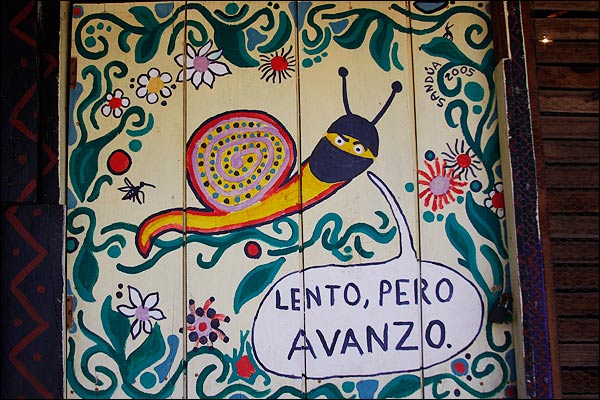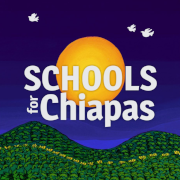
Image by Gustavo Chavez
This November 17th, 2023 marks 40 years since the foundation of the Zapatista Army of National Liberation (EZLN), in Chiapas, Mexico. The world met them ten years later with the uprising that will soon be 30 years old, on January 1st, 1994, a date engraved in the hearts, experiences and collective memory of peoples, communities and organizations in the vastest geographies of the planet.
The second date is at the same time fateful because NAFTA, the first misnamed free trade international treaty, came into force to legally impose the abuses of transnational corporations. Since then and in its continuation with the USMCA, it has not ceased to be a source of bad news for the people, especially in Mexico: right now it functions as a protective and echoing framework for unjust multimillion-dollar demands from polluting companies against the State and works to force the Mexican population to eat genetically modified corn, glyphosate and other poisons that companies send.
With that backdrop, the Zapatista uprising meant for many a ray of light, a relief, a respite: despite the enormous forces of capital and all its injustices, the smallest, those who seemed to be forgotten by the land and history, they rebelled without restrictions, with their hands, sticks, a lot of determination, a lot of organization and some weapons. They planted a flag and an energetic enough is enough, with which they shared with the world a small part of what they had been building for years.
Since then, they have planted much more than flags. Self-organized in thousands of communities on a territory that exceeds many Latin American and Caribbean countries in size, the Zapatista communities and their mutable, but solid forms of organization, have been affirming their economies, forms of production, distribution and consumption, agroecology, farming systems. education, health, construction, culture, sports, justice, administration, government. Of defense, through an Army that rules by obeying the communities, which is fixed and changing at the same time.
New generations of women, men, young people, girls, boys, have been formed in that reality of justice and autonomy, of questioning domination, of daily solidarity, of self-organization, of reflection and creation. They grew from the cultures and stories of indigenous Tseltal, Tojolabal, Tsotsil, Chol, Ma’am, Zoque peoples, in encounter – or collision – with other ideas and voices with which they listen, think, dialogue, confront. They are the same ones who take the wisdom and history of the people and at the same time they are others, they transform and build, they reinvent themselves all the time.
During these decades they have organized many international and national meetings in their territory and in that of others, with the brothers and sisters of the National Indigenous Congress and other organizations and peoples below, broad and fruitful meetings of women, arts, sciences and an endless listening, testimonies, reflections to understand the world, the oppressions in each below, the dignified rages and also the constructions in other horizons.
The Zapatista peoples have built this universe in a hostile environment in many ways, with harassment from the army, governments, media, paramilitaries. They have suffered and continue to suffer attacks and murders. Right now, they are besieged by the tinderbox of the military and organized crime that is Chiapas, by the deployment of government megaprojects such as the misnamed Mayan Train and the new pollution and traffic floodgates that are opening.
With their young 40 years and more, they now announce that in a ten-year process of discussion and elaboration among all their bases and instances, they have once again changed their forms of organization of Zapatista governments and government. The so-called Zapatista rebel autonomous municipalities and the Good Government Councils will no longer exist; they will be transformed into Local Autonomous Governments (GAL) in each community, groups of these GALs, and other forms of coordination in which these GAL groups meet to manage the entire territory. They emphasize that this increases the ability to decide from below, and that it is the bases that appoint, call or revoke the authorities. They have also changed the structure and disposition of the EZLN (https://bit.ly/40GoDG1) to increase the defense and security of the peoples and Mother Earth in case of aggressions, attacks, epidemics, invasion by companies, military occupation, natural disasters and wars (https://tinyurl.com/2cj2eafy).
It is one of the most notable aspects of the Zapatista communities and the EZLN, which is essential to any form of autonomy: their capacity – through decision and care – to analyze, change, permanently recreate their organizational and governing structures, a capacity that it is based on participation from and to the bases of the communities.
Original article by Silvia Ribeiro at https://www.jornada.com.mx/2023/11/18/opinion/015a1eco
Translated by Schools for Chiapas.
The Zapatista movement, with its permanence, depth and long-term view of the past, present and future, is one of the most valuable experiences of humanity, which together with the resistance of the peoples of the Sahara, Palestine and other indigenous peoples, teach us, without intending to, to walk in the darkness of the times we live in.
